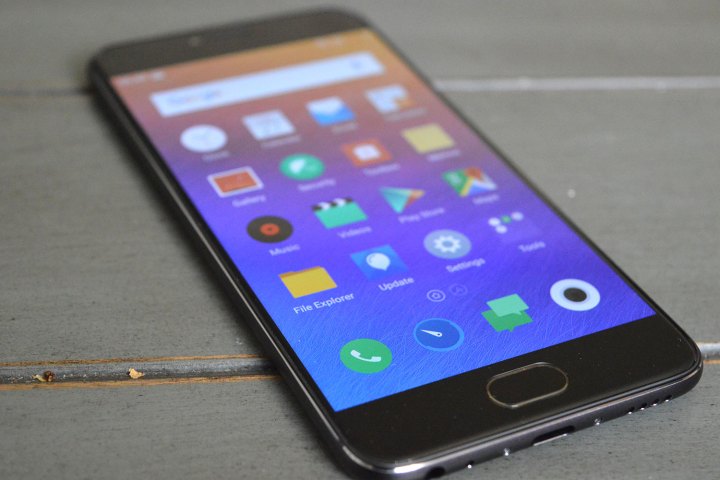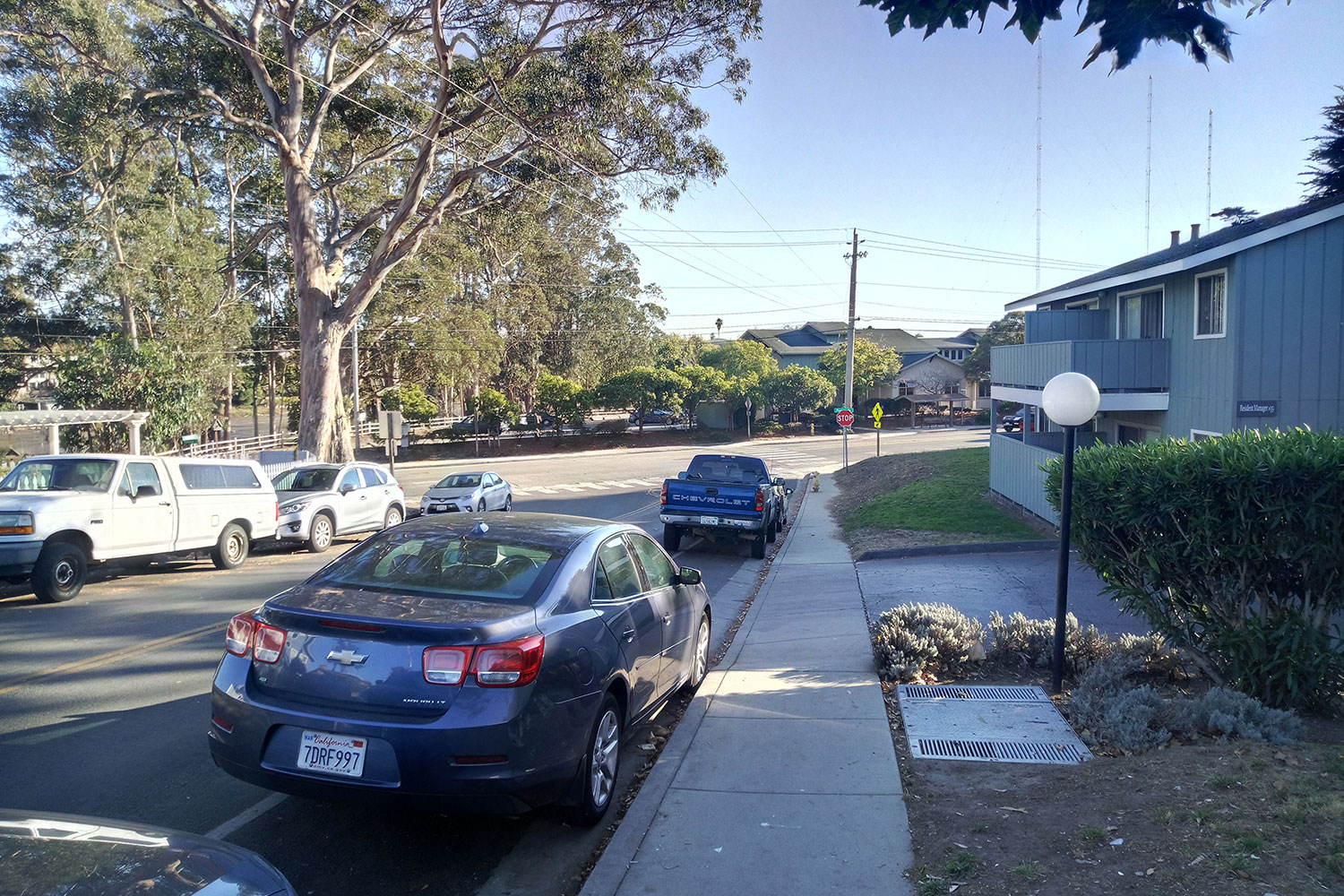“Meizu’s Pro 6 looks slick and performs well, but it can’t beat competitors like OnePlus and ZTE.”
- Slick aluminum design
- Fast fingerprint sensor
- Decent price
- Somewhat lackluster camera
- Disappointing battery life
- No U.S. LTE band support
- Competition offers more for the same price
Meizu is at it once again with yet another reasonably priced phone that boasts relatively decent specs. This year, the company launched the Pro 6, the next installment in the ‘Pro’ lineup, which has always been about offering a solid experience without the premium price tag.
Last year’s Pro 5 was a decent phone, however it failed to live up to the hype, especially following the much-loved MX4 Pro, which was the ‘Pro’ version of the company’s flagship MX4. Does the Pro 6 redeem the Pro lineup and bring anything new to the table? We took the phone for a spin to find out.
The Pro 6 looks like an iPhone
Meizu is well known as an iPhone copycat in terms of both hardware and software. The Pro 6 is no different, but Meizu obviously tried to incorporate a few unique ideas into the phone in an attempt to distance itself from its bad reputation.
Let’s start with the obvious similarities – the Pro 6 features a full unibody aluminum body with rounded edges and curves like any iPhone out there. It also shows antenna lines along the back, which curve up towards the top and bottom of the phone, similar to the antenna lines on the iPhone 7. The camera on the back, unlike the iPhone, is centered and has an LED flash, which you’ll find directly below the lens.
On the right side of the phone, you’ll find both the power button and the volume rocker. The SIM tray is on the left side. On the bottom — unlike the iPhone — you’ll see a headphone jack, USB-C port, and speaker grill. Under the screen on the front, you’ll find the home button right where you’d expect. It doubles as a fingerprint sensor that’s very speedy to act, but not altogether accurate. It accurately detected my fingerprint around two thirds of the time. The rest of the time, I had to scan my finger again or enter my PIN code.
The Meizu Pro 6 may look like an iPhone, but that’s not necessarily a bad thing – the iPhone is known for its beautiful design, and copy or not, the Pro 6 is a beautiful device. It’s heavier than expected, but not in a bad way. It feels solid and looks premium.
Flyme OS: the iOS of Android
Hardware isn’t the only design component to keep in mind – the design of the software continues Meizu’s iPhone copying tradition.
Copy or not, the Meizu Pro 6 is a beautiful device.
Not only does the overall look of Flyme – Meizu’s Android overlay – look like iOS, but it functions like iOS in some very interesting ways too. Most notably, Meizu has decided to continue pushing its 3D Press feature, which is more or less Meizu’s version of Apple’s 3D Touch. However, this feature is only supported by Meizu’s self-built apps at this point, probably because of the fact that Android doesn’t officially support a 3D Touch-like feature just yet, so there’s no incentive for third-party developers to incorporate the option unless they’re building specifically for a Meizu phone. It’s not really Meizu’s fault that no apps support 3D Press, but it would still be nice to see.
3D Press works pretty much exactly the same way as 3D Touch, and does many of the same things. You just press down on home screen icons to quickly access features of a particular app. For example, press down on the Memos app, and you’ll be able to create a ‘New Memo,’ a ‘Photo Memo,’ and more. Press down on the camera app, and you can quickly start shooting a video or use the front-facing camera as a mirror.
Flyme OS, which is in version 5.2, actually comes with some very useful stock apps. For example, the Toolbox app includes shortcuts to do things like turn on the flashlight, check the ‘mirror’ (use the front-facing camera to check yourself out), use the phone as a ruler, and so on. The software also has a security app, which lets you do things like clean up unnecessary files, run an antivirus software, and more.
The operating system also includes a few handy shortcuts. For example, you can swipe up from the bottom of the display to access your recently used apps menu, and a button near the top of the screen will let you close all those apps at once. That’s pretty helpful, especially for those who tend to have a lot of apps open at a time.
Decent specs for $400, but no U.S. LTE band support
First of all, we should point out that the Meizo Pro 6 doesn’t work on U.S. LTE bands, so it’s not an ideal phone for U.S. buyers. The phone supports the following bands: HSDPA 850 / 900 / 1900 / 2100, LTE band 1(2100), 3(1800), 7(2600), 38(2600), 39(1900), 40(2300), 41(2500). With that in mind, we continue on with the specs and performance.
The Meizu Pro 6 isn’t as fast or powerful as the OnePlus 3 or the ZTE Axon 7.
Under the hood the phone features a MediaTek Helio X25 chipset, which is coupled with a cool 4GB of RAM and either 32GB or 64GB of storage. Many will want to get the 64GB option, because the phone does not have a MicroSD card slot, so you won’t be able to add to that storage amount down the road.
The MediaTek Helio X25 isn’t a bad chipset by any means, and includes a fairly high-performance deca-core processor, which should help give it the edge over many other processors out there.
Before we jump into benchmarks, let’s talk about day to day use – in normal use, the phone runs very smoothly indeed. If you’re someone who wants a phone that can do things like make calls, text, browse social media, read emails, and so on, then this phone will be a great option regardless of benchmark results. The device really didn’t show any slowness when it came to things like opening and closing apps, however it did stutter a little in some more processor-heavy gaming situations.
Now, on to benchmarks.
The Meizu Pro 6 scored 93,521 on AnTuTu, which is overall a pretty decent score. No, it’s not ground-breaking by any means, but it represents a very solid effort, especially on a sub-$400 handset. Sure, there are better phones out there, like the OnePlus 3, which scored 140,288, and the Samsung Galaxy S7 Edge, which scored 134,599, but overall the Pro 6 offers relatively decent performance, especially for the price.
Of course, real-world performance is also helped by the amount of RAM a device has, and with 4GB the Pro 6 is no slouch. Most flagship devices these days offer 4GB of RAM, except for the OnePlus 3, which goes a step further and offers 6GB of RAM. The Meizu Pro 6 isn’t as fast or powerful as the OnePlus 3 or the ZTE Axon 7, which is a shame. It’s hard for Meizu to compete against those phones, especially since they’re in the same price range.
The display could be better
The Pro 6 packs a 5.2-inch Super AMOLED screen with a 1080p resolution, in the end boasting a pixel density of 423ppi. That’s not amazing, but it’s certainly not bad either – the resolution is slightly better than previous Meizu Pro devices, but that’s largely due to the fact that the device uses a 5.2-inch, not a 5.7-inch, display.
Images are clear, crisp, and look great, while the viewing angles on the device are really quite good. Some AMOLED panels end up with a slightly pinkish tinge to them at higher brightness levels, but this one doesn’t seem to suffer from that problem at all. Even if it did, the Pro 6 lets you tinker with the color temperature of the display with a slider in the Settings app that goes between ‘warmer’ and ‘colder.’ There’s also a feature that goes into a night mode that pulls out the blues on the screen to help you get to sleep quicker.
For a phone that is supposed to offer flagship specs, you might be wondering why it has a 1080p display. That’s likely to keep costs down, but to be honest it doesn’t really matter. We didn’t ever find ourselves wishing we had a higher resolution display – under normal use, the display on the Pro 6 is more than adequate.
You’ll want to bring your charger
The Meizu Pro 6 has a battery capacity of 2,560mAh, which definitely leaves a little to be desired. While the battery life isn’t terrible, you’ll definitely need to charge it after a day of use, and if you’re a heavy user probably even sooner. Officially, the phone will last around 15 hours of 3G talking time and 10 hours of video playback.
The good news is that the Pro 6 is charged with a USB-C port, and does include fast charging, so if you have a few minutes during the day to charge your device you should get an extra few hours of use out of it.
The camera is fine for the day-to-day
With a 21-megapixel Sony IMX 230 sensor, at least on paper, the Meizu Pro 6’s camera is no slouch. The sensor boasts an f/2.2 aperture, phase detection and laser autofocus and a 10-LED flash, all of which help achieve some decent shots. The camera is capable of shots with a resolution of up to 5,312 x 3,984 pixels.
The camera is fine for the day-to-day, but you won’t see “Shot on Pro 6” ad campaigns any time soon.
The camera is interesting in a few ways: first of all, it uses a hybrid autofocus system using both phase detection and laser autofocus, which doesn’t just help keep photos nice and crisp, but it also helps improve low-light shots.
When you launch the camera app, by default, you’ll be in auto mode, however, you also have the option of switching to manual mode and a range of other modes in between.
The quality of photos offers by this camera certainly aren’t bad, but they’re nothing to write home about either. Sometimes, the camera will surprise you with a great shot, and other times you’ll be disappointed. Generally, the photos offer decent detail and dynamic range, but the shots aren’t going to blow your mind. Zoom in, even a little, and you’ll notice a fair bit of detail loss.
The camera also has HDR mode, which is aimed at offering a little more exposure, giving the shots a little more detail and light. Sometimes, this can be super helpful and seriously increase the quality of your shots. Be aware that your shots will have a somewhat unrealistic look to them – that’s not necessarily a bad thing, but the shots can look a little overexposed at times.
While a 10-LED flash sounds impressive, it really doesn’t offer much more light than what you would find on your iPhone or flagship Android device. That’s not a bad thing, but if you’re buying a phone specifically for its flash, you might be a little disappointed with the Pro 6.
The front-facing camera on the device boasts a 5-megapixel sensor, which is better than most. Again, this camera is fine for the day-to-day, but you won’t see any “Shot on Pro 6” campaigns any time soon.
Overall, the camera isn’t terrible, but it leaves a little to be desired. If you’re a photographer and want a phone to satisfy your needs, you should probably keep looking.
Warranty and customer service
The Pro 6 comes with Meizu’s one-year warranty, which extends to defective units – you won’t get a replacement if you drop your device into the bath or if some disaster happens and your phone breaks.
Of course, you may be able to get a more comprehensive warranty plan through the retailer or carrier you buy your phone from – just keep in mind that it won’t be through Meizu.
Conclusions
The Meizu Pro 6 isn’t perfect, but for less than $400, it’s a decent nice phone. It would be nice to see a slightly better camera and a better battery, but for 2,499 yuan, which equates to around $375, it has a lot to offer.
If you wish you could get an iPhone but don’t have the cash, or if you like Apple’s design sensibilities but want Android on your phone, the Pro 6 is an excellent choice.
Of course, that doesn’t mean it’s the best choice. In fact, for about $25 more, you could get the OnePlus 3, which boasts a Qualcomm Snapdragon 820 processor, a massive 6GB of RAM, and a far better camera. There’s also the gorgeous ZTE Axon 7, which costs $400, has a Qualcomm Snapdragon 820 chip, 4GB RAM, and a strong camera. Our recommendation is that if you’re looking for a flagship device with a $400 price tag, check out the OnePlus 3 or the ZTE Axon 7.
Both of these devices are more readily available to U.S. buyers than Meizu’s phones, which you’ll have to buy through sites like Amazon and GearBest. On Amazon, you’ll pay just over $400, but on GearBest, it’s a slightly better deal at $340.


















